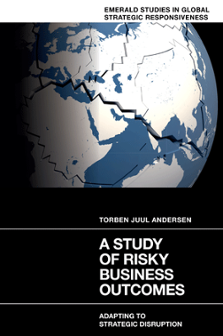
Index
A Study of Risky Business Outcomes: Adapting to Strategic Disruption
ISBN: 978-1-83797-075-9, eISBN: 978-1-83797-074-2
Publication date: 29 September 2023
Citation
Andersen, T.J. (2023), "Index", A Study of Risky Business Outcomes: Adapting to Strategic Disruption (Emerald Studies in Global Strategic Responsiveness), Emerald Publishing Limited, Leeds, pp. 159-163. https://doi.org/10.1108/978-1-83797-074-220231011
Publisher
:Emerald Publishing Limited
Copyright © 2023 Torben Juul Andersen
INDEX
- Prelims
- Chapter 1: Managing (in) a Disruptive World
- Chapter 2: Collecting the Data
- Chapter 3: Preliminary Data Analysis
- Chapter 4: Extended Data Analysis
- Chapter 5: Background and Prior Studies
- Chapter 6: Analyzing Manufacturing Subsamples
- Chapter 7: Simulating Strategic Adaptation
- Chapter 8: Examining the Outliers
- Chapter 9: Summary and Conclusion
- Index